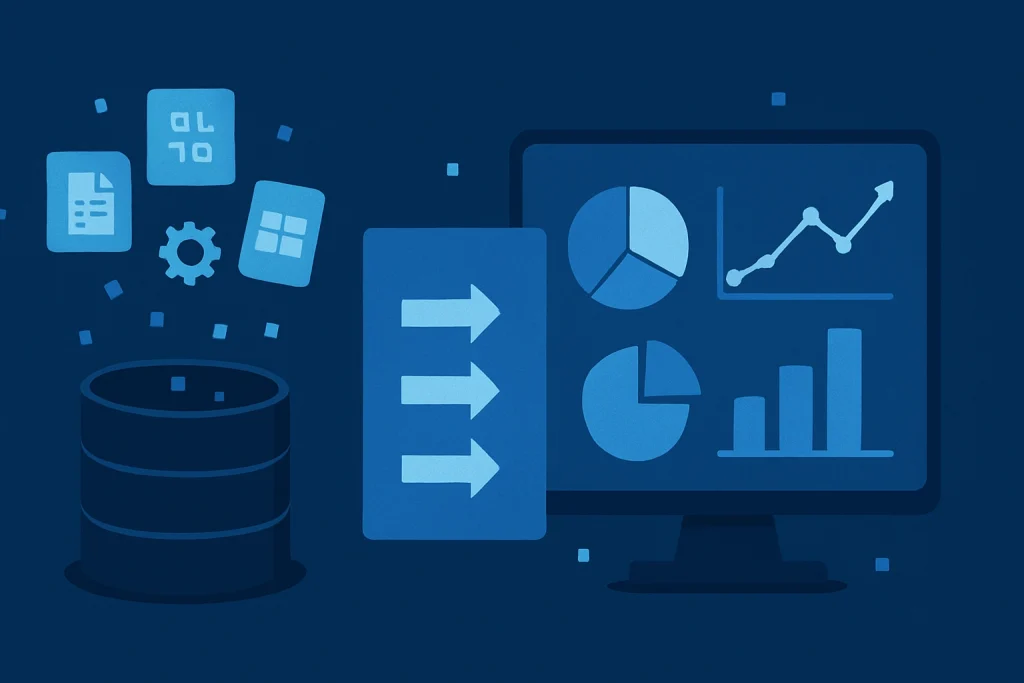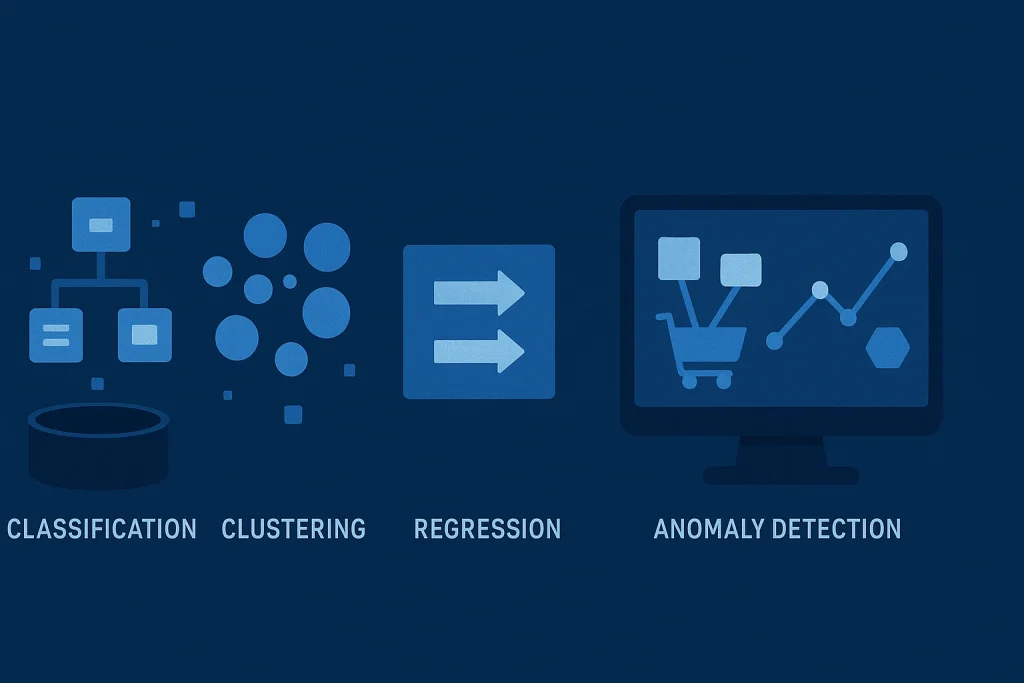The first time I encountered the concept of data mining was during a college project. Our professor handed us a massive spreadsheet filled with thousands of supermarket transactions. At first glance, it looked like a mountain of meaningless numbers. Rows upon rows of product codes, customer IDs, and purchase dates stretched endlessly across the screen.
In today’s world of technology trends, we are surrounded by oceans of data. Every swipe on a smartphone, every online order, every social media post generates information. But without the right tools, it’s just noise. Data mining is the compass that transforms that noise into clarity. It reveals patterns, predicts outcomes, and helps businesses and researchers make smarter choices.
What is Data Mining?

At its core, data mining is the process of discovering patterns, relationships, and trends within large sets of information. Some call it “knowledge discovery in databases.” It combines statistics, machine learning, and database systems to turn raw data into actionable knowledge.
So, when someone asks what is data mining, the answer is: it’s the art of making sense of massive amounts of information and finding the hidden gems that drive decisions. Instead of simply storing data, organizations use mining to interpret it. Think of it as moving from a warehouse full of unsorted boxes to a neatly organized library where every book tells a story.
Breaking Down Data Mining
Although the concept sounds intimidating, data mining can be broken into clear, manageable steps:
Data Collection
This is the foundation of any data-driven project. Information is gathered from a wide variety of sources, such as relational databases, IoT sensors, enterprise applications, surveys, or even massive social media feeds. The quality and variety of the collected data directly affect the accuracy of the results. For example, an e-commerce company might combine website logs, customer purchase history, and feedback surveys to get a complete picture of buyer behavior.
Preprocessing
Raw data is rarely ready for analysis. Preprocessing ensures that the dataset is usable by removing errors, correcting inconsistencies, filling in missing values, and eliminating duplicates. This stage is often compared to tidying a messy workspace before starting a big project. It may also involve normalizing data formats, filtering irrelevant entries, or combining multiple sources into a consistent structure.
Pattern Discovery
These patterns may reveal correlations, clusters of similar behaviors, or predictive trends that forecast future outcomes. Depending on the method used—classification, regression, clustering, or association rule mining—the discovered insights can power decision-making in areas like marketing, fraud detection, or product recommendations.
Evaluation
Evaluation is the step where analysts determine whether the patterns uncovered are meaningful, reliable, and actionable—or just random noise. Techniques like cross-validation, statistical testing, or benchmarking against historical data help ensure the results are solid.
Visualization
Visualization transforms raw outputs into clear charts, interactive dashboards, or intuitive visual models that decision-makers can easily understand. Good visualization bridges the gap between technical analysis and business action, turning complex datasets into stories that inspire confident choices.
History of Data Mining
The history of data mining stretches back further than most people realize.
In the 1960s, statisticians were already experimenting with methods to analyze large data sets, though limited technology made it slow. In the 1980s, databases became more advanced, allowing organizations to store vast amounts of information more efficiently. By the 1990s, the rise of machine learning and improved algorithms gave birth to modern data mining as we know it.
By the 2000s, businesses began using mining for decision-making. Retailers optimized their supply chains, and financial institutions started detecting fraud more effectively. Fast forward to the 2010s, and the explosion of big data and cloud computing supercharged mining capabilities. Now, in the 2020s, the integration of artificial intelligence has pushed data mining into predictive and even prescriptive analytics—helping organizations not only understand what happened but also forecast what will happen next.
| Decade | Milestone |
|---|---|
| 1960s | Early statistical methods emerge |
| 1980s | Rise of databases and storage systems |
| 1990s | Machine learning integrates with analysis |
| 2000s | Businesses adopt mining for strategy |
| 2010s | Big data and cloud computing accelerate growth |
| 2020s | AI integration enables predictive and prescriptive insights |
Types of Data Mining

Classification
Sorting information into predefined categories. For example, emails can be classified as “spam” or “not spam.” Healthcare providers use classification to determine whether symptoms fall into high-risk or low-risk categories.
Clustering
Grouping data points with similar characteristics. Retailers may cluster customers based on shopping habits to personalize promotions.
Regression
Predicting numerical outcomes. Real estate companies use regression to forecast house prices based on location, size, and amenities.
Association
Finding links between items. Supermarkets often discover that people who buy chips frequently buy soda as well.
Anomaly Detection
Spotting unusual or rare data points. Credit card companies use this to instantly detect suspicious transactions.
How Does Data Mining Work?
Understanding what is data mining means knowing how it functions step by step:
- Set Objectives: Define the problem or goal. For instance, predicting customer churn.
- Collect Data: Pull information from internal databases, sensors, or external sources.
- Clean and Prepare Data: Remove duplicates, fix errors, and standardize formats.
- Apply Algorithms: Use machine learning or statistical models to analyze patterns.
- Interpret Results: Check whether insights are reliable and relevant.
- Make Decisions: Act on the findings, whether it’s launching a marketing campaign or improving operations.
Think of it like cooking. You decide what dish you want, gather ingredients, clean and chop them, follow a recipe, and finally serve the meal. Data mining follows the same sequence—clear goals, careful preparation, and satisfying results.
Pros & Cons
| Pros | Cons |
|---|---|
| Reveals hidden patterns | Requires large amounts of data |
| Improves decision-making | Can raise privacy concerns |
| Predicts future outcomes | Demands technical expertise |
| Increases efficiency | Risk of biased results |
Data mining is powerful, but it’s not perfect. The biggest challenges often involve privacy, data quality, and ethical use. However, when applied responsibly, the benefits can far outweigh the risks.
Uses of Data Mining
Healthcare
Hospitals mine data to predict patient readmissions, detect early signs of disease, and personalize treatments. During the COVID-19 pandemic, mining helped track and predict outbreaks across regions.
Finance
Banks use it to flag fraudulent activity, assess creditworthiness, and tailor financial products. Hedge funds mine data to anticipate market movements and guide investment strategies.
Marketing
Businesses rely on mining to segment customers, predict shopping trends, and craft targeted campaigns. Ever wonder how Netflix recommends the perfect show? That’s data mining in action.
Retail
Supermarkets mine shopping carts to place related products together. Online retailers like Amazon use it to personalize suggestions, boosting sales significantly.
Technology
Streaming services, search engines, and social platforms all depend on mining. Spotify curates playlists, Google predicts search queries, and LinkedIn suggests job opportunities—all thanks to mining.
Resources
- IBM; Data Mining: What is it and how does it work?
- SAS; What is Data Mining?
- Investopedia; Data Mining Definition
- Oracle; Data Mining Concepts
- TechTarget; Benefits and Challenges of Data Mining
